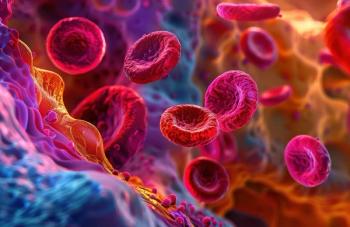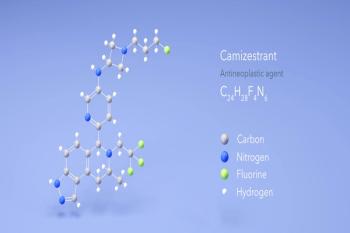
Methotrexate—but Not Glucocorticoids—Affects BMD in Patients With ALL
The findings add complexity to questions about the long-term impact of acute lymphoblastic leukemia (ALL) therapy.
A new report shows high cumulative doses of intravenous methotrexate can have negative long-term impacts on the bone mineral density (BMD) of pediatric survivors of
The study, which was
Treatment of pediatric ALL has progressed significantly, to the point where the 5-year overall survival rate with risk-stratified treatment is better than 90%, the authors explained.
“With this increased survival rate in the pediatric patient population, it has become essential to monitor for late effects of chemotherapy,” they wrote.
Guidelines recommend dual-energy x-ray absorptiometry (DXA) scans in patients who receive methotrexate, glucocorticoids, or hematopoietic stem cell transplants, in order to monitor the impact of treatment on BMD. The authors wrote that reduced BMD “can negatively affect lifelong skeletal health by increasing the risk for developing osteopenia and osteoporosis.”
While the potential for low BMD among patients treated for pediatric ALL has long been known, the authors said the existing literature on the question has come to conflicting conclusions.
They conducted their study in the hopes of better understanding the possible consequences of cumulative methotrexate and glucocorticoid dosing, as well as whether vitamin D concentrations might have predictive value with regard to BMD.
The investigators identified 62 patients who had survived ALL and had received DXA scans either at the end of therapy or within 6 months before the end of therapy. Participants were stratified based on how much methotrexate they had received. Patients who received a cumulative methotrexate dosage of less than 20,000 mg/m2 were categorized as having received low/intermediate dosage (34 patients); those with 20,000 mg/m2 or more of cumulative methotrexate dosage were put into a high-dosage category (28 patients).
After a median time of 2.3 years following the end of therapy, patients received a new DXA scan. The authors found that patients in the high methotrexate category had a significantly lower lumbar spine z score, a measure of BMD, compared with the low/intermediate group (–0.86 vs –0.14; P = .008).
“This finding suggests that [intravenous] MTX may have a negative dose-related effect on BMD among pediatric ALL survivors at the beginning of their long-term follow-up care,” the authors said.
When they performed a similar analysis based on cumulative prednisone dosage, there was no association between dosage category and DXA lumbar spine z scores. There were also no significant differences in scores when patients were grouped based on vitamin D concentrations.
The authors said there are clear reasons to suspect that methotrexate and glucocorticoids therapy could affect BMD.
“Methotrexate increases bone resorption while inhibiting bone formation,” they wrote. “Glucocorticoids also increase bone resorption, decrease bone mass, and inhibit osteoblast synthesis and proliferation, leading to reduced bone formation.”
Indeed, previous research has implicated both methotrexate and prednisone in low BMD. Then again, other studies have found the opposite. The authors said one likely reason for the conflicting data in published research is the fact that previous studies have used different patient populations, treatment protocols, and methods of BMD measurements.
This study was limited by a small sample size and by variability in the age of patients during DXA scanning and the skeletal sites of the DXA scans. The researchers also did not control for factors that might have a positive impact on bone health, such as nutrition and physical activity levels.
The investigators said their study findings suggest patients receiving at least 20,000 mg/m2 of methotrexate would benefit most from DXA monitoring. However, they said it is clear that more investigation is still warranted in a larger study population in order to more conclusively understand the risks associated with ALL therapy in children.
Reference
Yamanishi AD, Determan D, Kuo DJ. Dose-related effect of chemotherapy on bone mineral density among pediatric acute lymphoblastic leukemia survivors. J Pediatr Pharmacol Ther. 2024;29(1):53-60. doi:10.5863/1551-6776-29.1.53
Newsletter
Stay ahead of policy, cost, and value—subscribe to AJMC for expert insights at the intersection of clinical care and health economics.













































